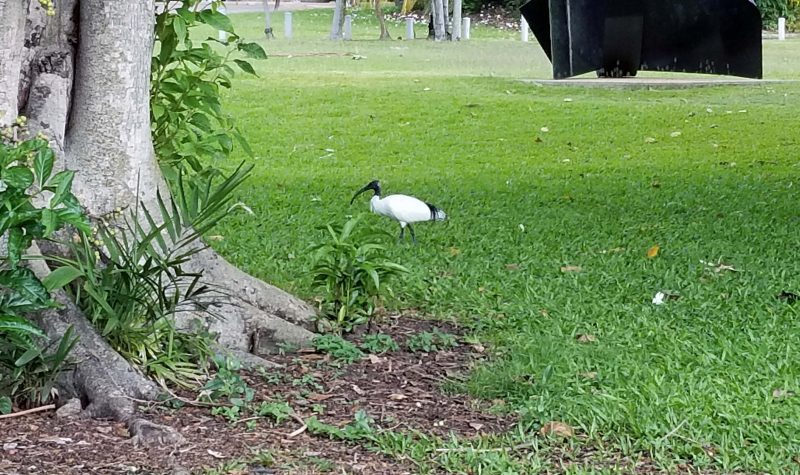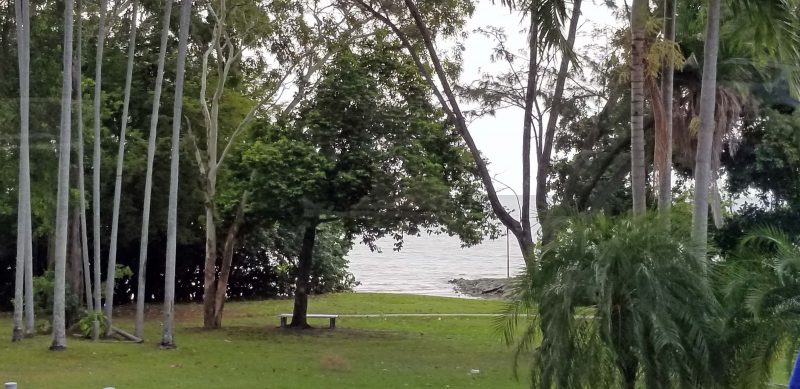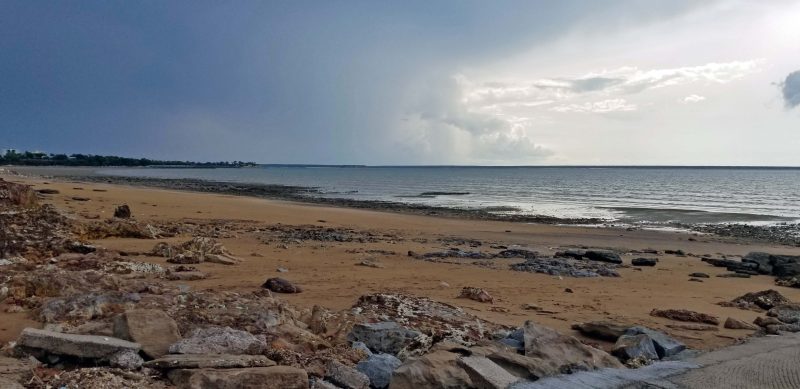Darwin is in the provincial capital of Australia’s sparsely populated Northern Territory and is named for Charles Darwin, who spent a great deal of time in the area. Darwin (north coast of Australia) is a long way from Adelaide (south coast of Australia) and there’s not much in between so, back in the day, communication and travel between north and south were difficult. At one point, there were a number of people trying to find a north-south route across the continent, similar to Lewis and Clark looking for a route to the northwest U.S.
Ted and I had a number of activities to choose from as ways to spend our time in Darwin, and we chose to visit the Northern Territory Museum and Art Gallery (NTMAG). It was definitely the right choice. It is one of the best museums we’ve ever visited–and we like museums, so we visit a lot of them. We spent several hours at the museum and could easily have spent another two hours there, but it was closing.
The first exhibit we viewed was called “Between the Moon and the Stars.” I learned some things about the moon that I didn’t know before. First, within our galaxy, Earth’s moon is the largest in relation to the size of the planet it orbits; second, Earth’s moon is one of the largest in the entire Solar System; and third, the moon is moving away from the Earth at the rate of 3.8 cm/year. (I might have known that before, but I’d forgotten it.) Because the moon used to be closer, Earth used to have much higher/lower tides, which affected the development of plants and animals in the tidal areas. My favorite piece of art in this exhibit is called “Solar Eclipse.”
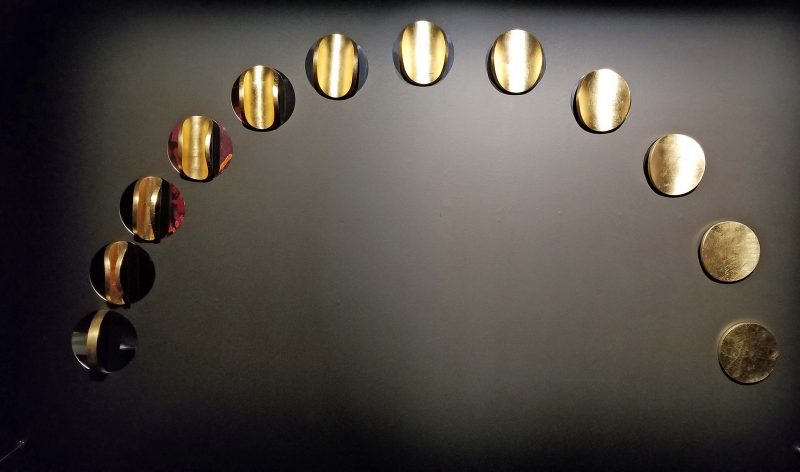
The next exhibit we went to was titled “Therese Ritchie: Burning Hearts.” According to the sign at the entrance to the exhibit, Ritchie “is widely known for her irreverent humour and biting commentary that shines a spotlight on the foibles and backflips of prominent politicians and leaders.”
One of Ritchie’s platforms is the lack of access to health care in remote areas of Australia. People living in remote regions have a much lower life expectancy than the general population because (1) they are poor, which means (2) they don’t have cars, so (3) they can’t access health care services, even if they have health insurance. For example, kidney dialysis requires several hours of time three days a week, and the nearest health center providing dialysis is often 4-5 hours away (one way) in remote areas. Without a car, those people cannot have dialysis, so they die. One of Ritchie’s pieces of art shows four politicians opposed to expanding health care services sitting in a hospital during dialysis with the caption: “Get well soon.” Many of her other recent works address the harm fracking does to the earth. Ritchie titled one of them “Why I stuck a fracker up my clacker.” Here are two other pieces of her work. Australians in the museum recognized all the politicians in the first photo below.
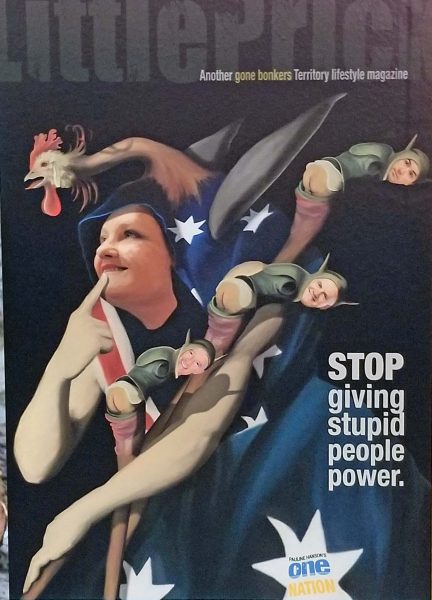

We headed for the exhibit about Cyclone Nancy that flattened Darwin in 1974, but checked the time and discovered we had 20 minutes left before the museum closed. As a result, we had to skim the displays and hurry through that exhibit. We walked down to the beach and took some photos before going back to our ship. We saw an Australian ibis and a beach not unlike some in the Pacific Northwest as well as an afternoon thundershower in the distance.
